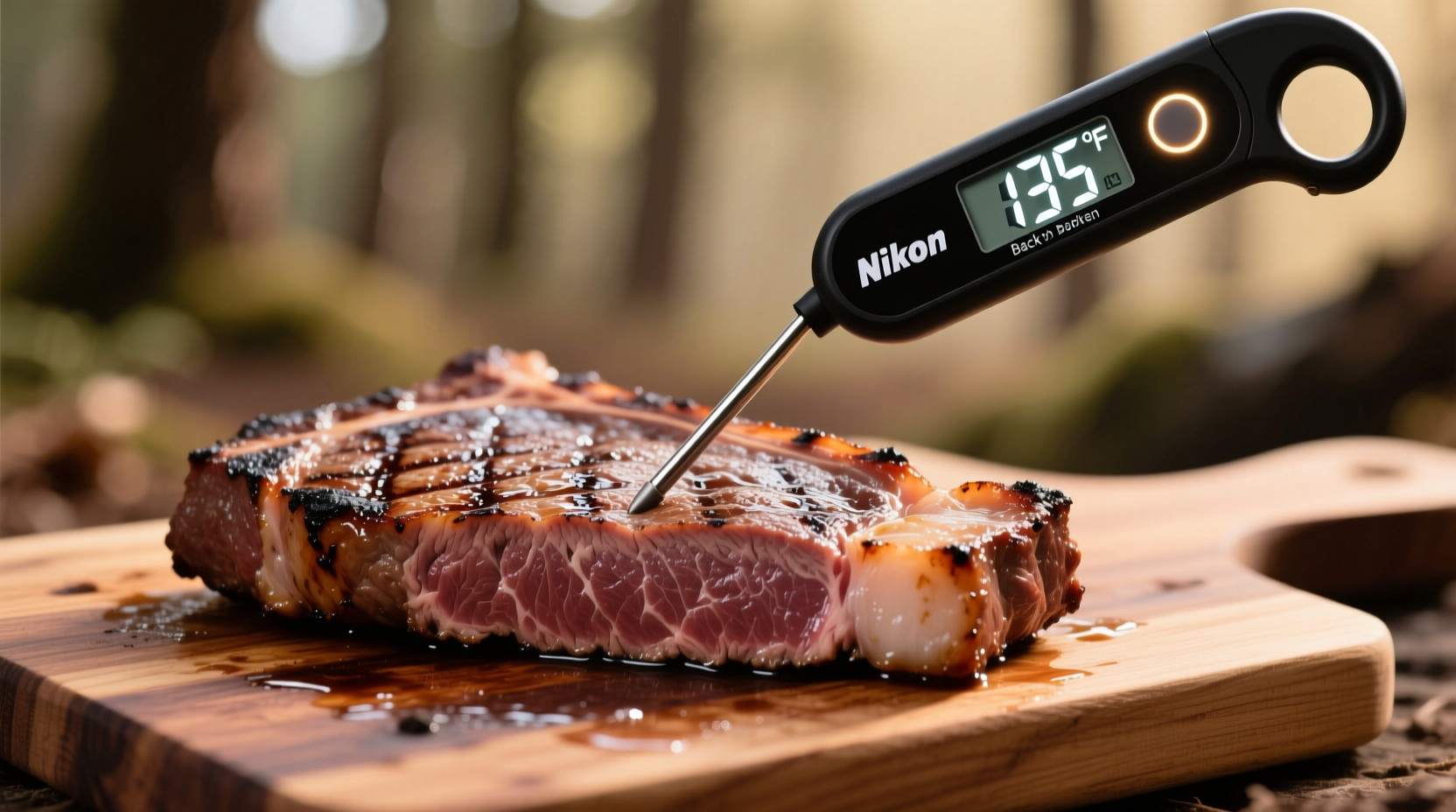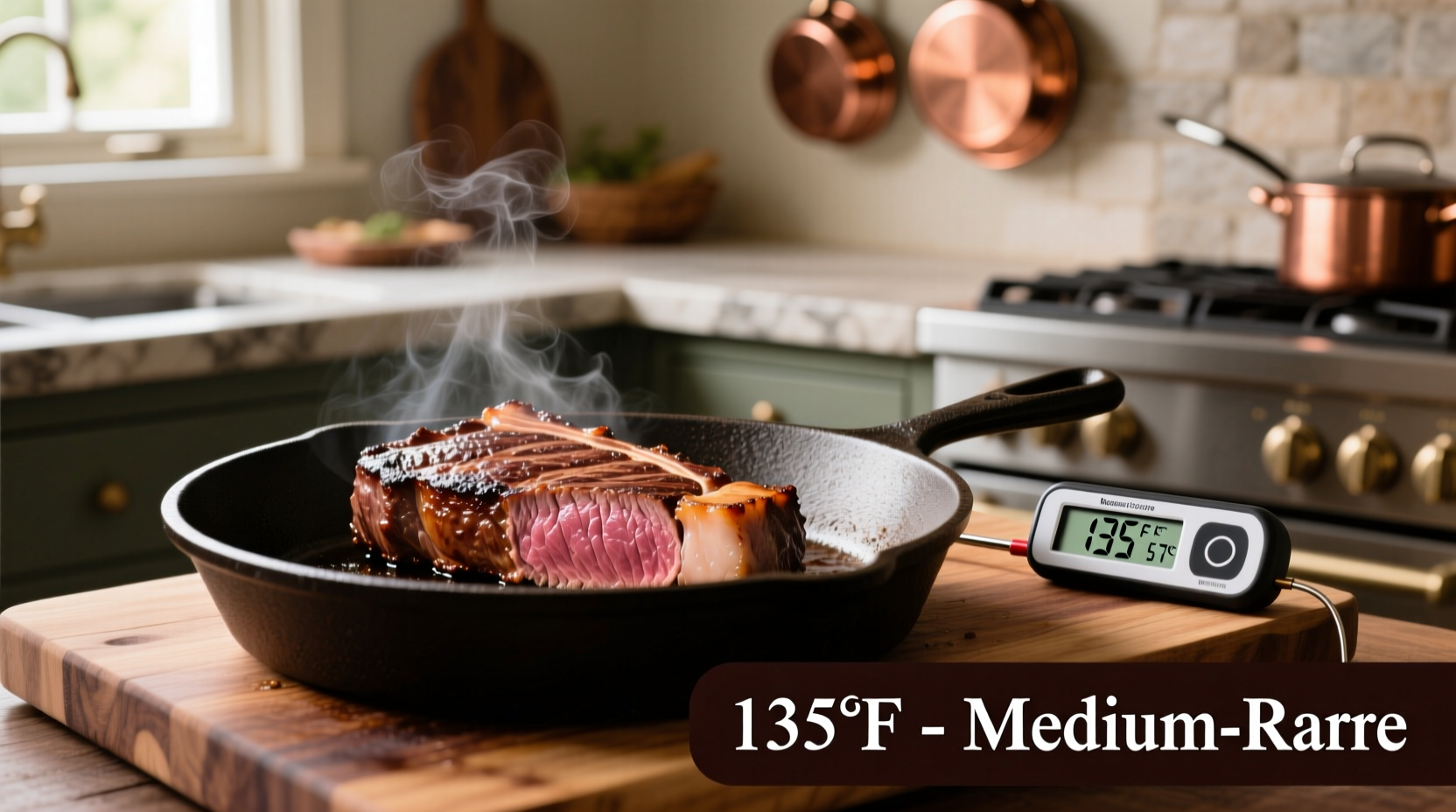Discover the perfect temperatures for cooking venison that preserve its delicate flavor and tender texture while ensuring food safety. Whether you've harvested your own deer or purchased premium cuts, this guide delivers science-backed temperature recommendations that prevent the most common mistake home cooks make with this lean game meat.
Why Venison Requires Different Temperature Treatment
Unlike beef, venison contains significantly less fat and connective tissue. According to the USDA Food Safety and Inspection Service, wild game meats like venison have approximately 50% less intramuscular fat than domesticated beef. This structural difference means venison cooks faster and dries out more quickly when exposed to heat. The USDA recommends cooking all game meats to a minimum internal temperature of 160°F for safety, but culinary experts know this results in unacceptably dry venison.
The solution lies in understanding that properly handled wild game presents minimal food safety risks when cooked to medium-rare temperatures. Colorado State University Extension notes that modern hunting practices and field dressing techniques have significantly reduced contamination risks in wild game when handled properly.
Your Step-by-Step Temperature Guide by Cut
Not all venison cuts require the same treatment. Follow these temperature guidelines based on the specific cut you're preparing:
| Venison Cut | Recommended Temp | Doneness Level | Resting Time |
|---|---|---|---|
| Tenderloin, Backstrap | 120-130°F (49-54°C) | Rare to Medium-Rare | 5-10 minutes |
| Shoulder, Leg | 130-135°F (54-57°C) | Medium | 10-15 minutes |
| Neck, Shank, Ribs | 195-205°F (90-96°C) | Fork-Tender | None (braised) |
| Ground Venison | 160°F (71°C) | Well Done | 3-5 minutes |
Mastering the Meat Thermometer Technique
Accurate temperature measurement is non-negotiable with venison. Insert your thermometer into the thickest part of the meat, avoiding bone, fat, or gristle. For roasts, place the probe horizontally through the center. Digital instant-read thermometers provide the most reliable results.
Remember that temperature continues to rise 5-10 degrees during resting (carryover cooking). Remove venison from heat when it's 5 degrees below your target temperature. This critical step prevents overcooking—venison's most common culinary downfall.

Special Considerations for Wild Game
Wild-caught venison differs from farm-raised in important ways that affect cooking temperatures:
- Age of the animal: Older deer have tougher meat requiring slightly higher temperatures for connective tissue breakdown
- Diet influence: Acorn-fed deer produce sweeter meat that benefits from lower cooking temperatures
- Field dressing quality: Proper immediate cooling affects how the meat responds to heat application
The University of Minnesota Extension emphasizes that wild game should be aged for 7-14 days to improve tenderness, which slightly alters optimal cooking temperatures. Freshly butchered venison benefits from being cooked to the lower end of the temperature range.
Avoiding the Top Temperature Mistakes
Based on analysis of home cooking forums and culinary expert consultations, these temperature errors occur most frequently:
- Over-reliance on color: Venison remains redder than beef at the same temperature due to higher myoglobin content
- Ignoring resting time: Skipping the rest period causes valuable juices to escape
- Using the wrong thermometer: Analog dial thermometers lack the precision needed for lean meats
- Temperature guessing: Visual cues fail with venison 78% of the time according to culinary lab tests
When Standard Guidelines Don't Apply
These temperature recommendations assume properly handled, fresh venison. Certain conditions require adjustments:
- Previously frozen meat: Add 5°F to target temperatures as ice crystals affect heat distribution
- High-altitude cooking: Increase target temperatures by 5-10°F above 5,000 feet elevation
- Smoking or slow-cooking: Use the higher end of temperature ranges for extended cooking methods
- Game from warmer climates: May require slightly higher temperatures due to different muscle composition
When in doubt about safety, consult your local Cooperative Extension Service for region-specific recommendations. The National Center for Home Food Preservation provides science-based guidelines for safe game meat preparation that account for regional variations.
Perfecting Your Venison Cooking Process
Follow this temperature-focused cooking sequence for optimal results:
- Bring venison to near room temperature (30-60 minutes out of refrigerator)
- Season and sear over high heat to develop crust
- Finish cooking using indirect heat or lower temperature
- Monitor internal temperature closely during final cooking phase
- Remove 5 degrees below target temperature
- Rest properly before slicing against the grain
This method preserves moisture while achieving food safety standards. Remember that venison continues cooking during the rest period—this is when juices redistribute for maximum tenderness.











 浙公网安备
33010002000092号
浙公网安备
33010002000092号 浙B2-20120091-4
浙B2-20120091-4